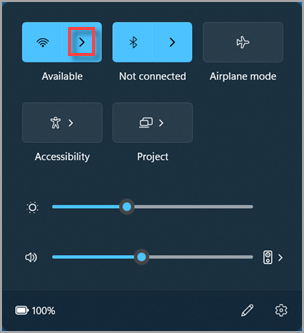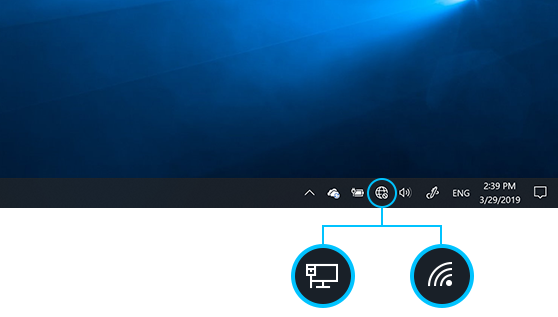3 Steps on How to Improve Laptop WiFi Connection
Is your laptop WiFi connection not working properly? Is it cutting out, or is the signal strength too low? You’re not alone. Many people experience these issues on their laptops. Fortunately, there are a few things you can do to get faster, more reliable Internet connectivity!
In this blog post, we will discuss how to improve laptop WiFi connection by eliminating all the problems that may affect your connectivity performance, increasing the wireless signal strength, and setting up failover protection for when the network goes down.
Improving Laptop WiFi Connection: Is It Your ISP or Is It You?
As mentioned before, the first step would be to eliminate the problems that influence connectivity performance. These can happen because of ISP issues or something related to the networking equipment in your home or office.
First of all — run an Internet speed test. If you’re paying for a certain connection speed, but the test reveals that it is much slower than advertised, then contact your ISP and see how they can help.
Another possibility you have to take into account: is your ISP throttling your connection? Here’s a guide to determine if your ISP is trying to conserve bandwidth.
Of course, there might also be some issues related to equipment that could lead to slow performance or even intermittent connectivity problems: defective devices (routers), bad wiring (cables) or too many appliances plugged in at one time on the same circuit as wireless access points.
This is usually reflected in Internet outages and maintenance work done by the ISP. In case you don’t see any reported outage in your area, make sure you contact your provider and let them know something’s wrong.
These are the most common issues on the ISP’s side. Next — let’s see how you can improve your laptop’s WiFi connection by getting more signal to your laptop.
10 Tips to Get Better WiFi Signal to Your Laptop for Faster, More Reliable Connectivity
Here are a few tips on how to boost the WiFi signal on your Windows laptop, MacBook or Linux laptop:
- Move closer to the WiFi hotspot. Your Internet should perform best when the WiFi signal is full. The better your connection, the more quickly and reliably you will be able to surf online on your laptop or tablet.
- Move your router to a more central part of your home, so the Wi-Fi range covers all the areas.
- If there are still areas with poor WiFi coverage in your home or maybe on the patio, use a WiFi repeater — see how you can create one using your Windows PC .
- Make sure the WiFi signal from your router to your laptop is not obstructed. Adjust how close your router and laptop lie to walls, mirrors and other objects that may block the WiFi signal path.
- Eliminate wireless interference — here are some common sources. Make sure any of those devices are not near the router or the laptop, to avoid WiFi interference.
- Change the WiFi channel. Sometimes one channel can be stronger than others, and by simply switching channels from your router or laptop you’ll increase signal strength for better connectivity to the Internet.
- Update the drivers for your WiFi network adapter. Visit the manufacturer’s website or check the updates available in Windows, macOS or Linux.
- Update the firmware of your wireless router. Check the manufacturer’s website and make sure you get the right firmware for your router. The same model of router can have different hardware — be careful when flashing a new firmware to your router; otherwise it’s possible you will brick the device.
- If you’re still having issues connecting to wireless networks, try using an external USB WiFi adapter instead of your built-in adapter. Make sure it’s compatible with 5 GHz WiFi networks. And, as in the case above, make sure you have the latest drivers for your operating system installed.
- Switch to a 5 GHz WiFi network. Most routers nowadays can also create WiFi hotspots on the 5 GHz frequency spectrum. That offers faster speeds at the cost of slightly lower coverage. So, where possible, connect to the 5 GHz WiFi networks on your laptop.
How to Improve Laptop WiFi Connection: Make Sure You Stay Online
Whether the tips above helped or didn’t help you improve your laptop’s WiFi connection, one thing is for sure: you will need to make sure you stay connected when WiFi fails.
Sure, you can switch to another WiFi hotspot or even tether your smartphone to your laptop and use its cellular data. But that takes time and those 20-30 seconds from when you realize the Internet is down until you connect another source will surely:
- disconnect you from any video call / online meeting you may be a part of;
- stop the live stream you’re broadcasting or watching;
- drop you from that game you’re playing online.
To avoid this, you need to use all available Internet connections (at least two) at the same time. This can easily be done with a bonding VPN like Speedify.
Speedify is a allows you to use all of your Internet connections at once , providing more speed, stability and security . As long as you’re connected to more than one ISP, chances are you will not get disconnected completely from the Internet, thanks to Speedify’s automatic failover protection. Plus, you will get «super-pipe» type connectivity by combining all available connections — WiFi, cellular, wired Ethernet, etc.
The Speedify app is available on all major operating systems for laptops: Windows (PC), macOS (MacBook) and Linux. You can get it from our website or the Mac Store (for MacBooks).
Now you have more than 10 answers to the question of how to improve laptop WiFi connection. If you want to skip to a proven solution, just use Speedify.
Connect to a Wi-Fi network in Windows
Whether you’re at home, work, or out and about, chances are you’ll find a Wi-Fi network that you can connect to for internet access.
- Select the Network, Sound, or Battery icons ( ) on the far right side of the taskbar to open quick settings.
The Disconnected icon appears when you’re not connected.
On the Wi-Fi quick setting, select Manage Wi-Fi connections .
Whether you’re at home, work, or out and about, chances are you’ll find a Wi-Fi network that you can connect to for internet access.
- Select the Network icon on the taskbar. The icon that appears depends on your current connection state. If you don’t see one of the network icons (or a similar one) shown in the following image, select the Up arrow to see if it appears there.
- Choose the Wi-Fi network you want, then select Connect.
- Type the network password, and then select Next.
- Choose Yes or No, depending on the type of network you’re connecting to and if you want your PC to be discoverable by other PCs and devices on the network.


